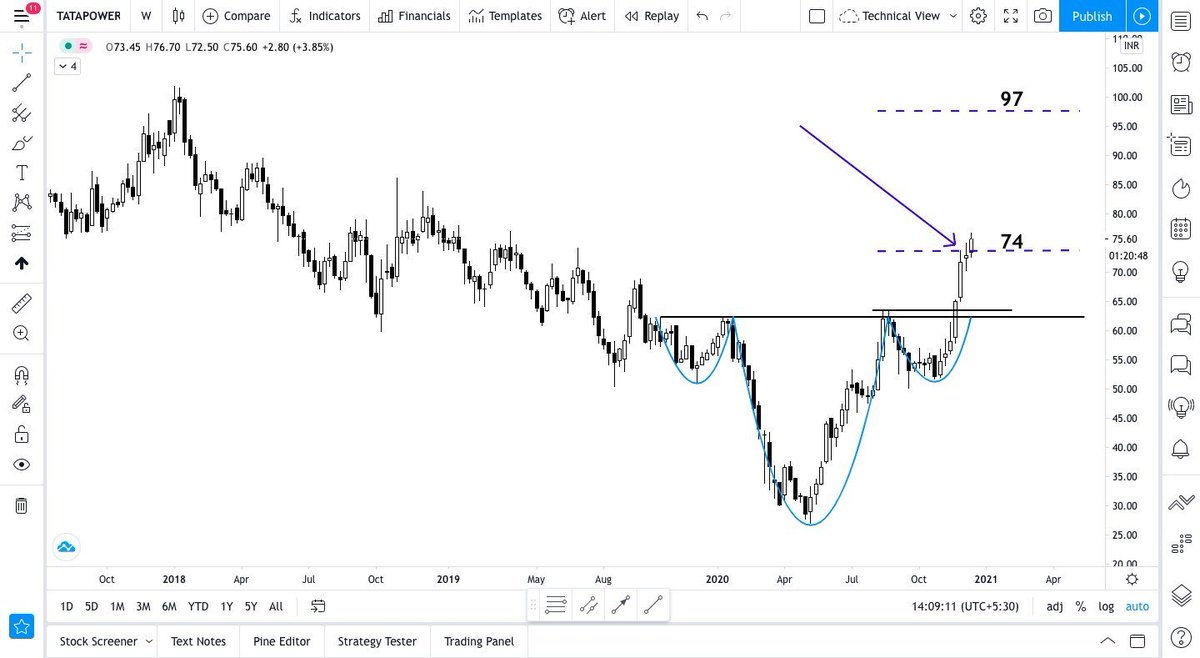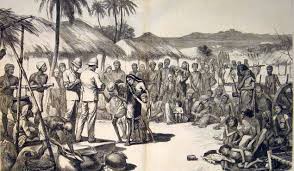#TATAPOWER Monthly Log chart
Above 145.80; A strong upside might get unlocked towards 240.
#StockMarket #StocksToWatch

More from Gurleen
2715 📍
In Weekly; next in-line 2850.
In Monthly; Once ATH is taken out, A sight of 3000+ would be caught.
#StockMarket #StocksInFocus #HDFC https://t.co/VpM9Yvbq7l
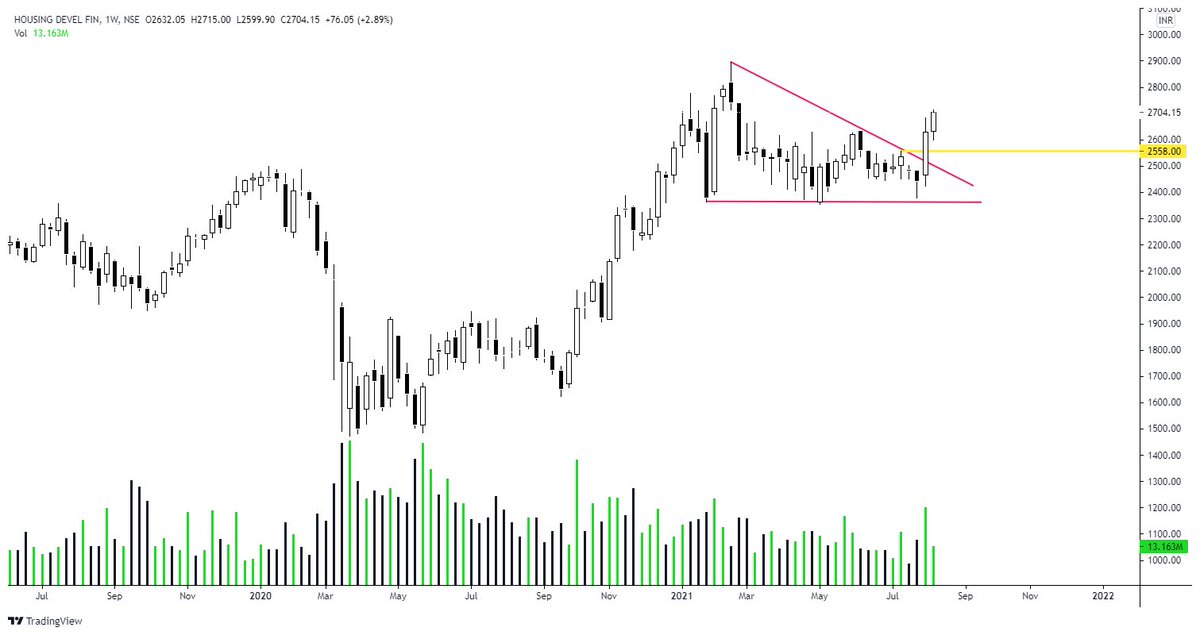
#HDFC Daily and Weekly TF's
— Gurleen (@GurleenKaur_19) August 3, 2021
Broken past the descending trendline; A follow-up beyond '2558' would bring in 2630 initially followed by 2850.
In Monthly; Once ATH is taken out, A sight of 3000+ would be caught.
[Will open position above 2558]#StockMarket #StocksToWatch pic.twitter.com/jRukw5Yh6d
TSL hit 📉
Though at CMP; Time to stack in 📈 for targets of 2620 followed by 2720.
#StockMarket https://t.co/IHHpv2bU2w
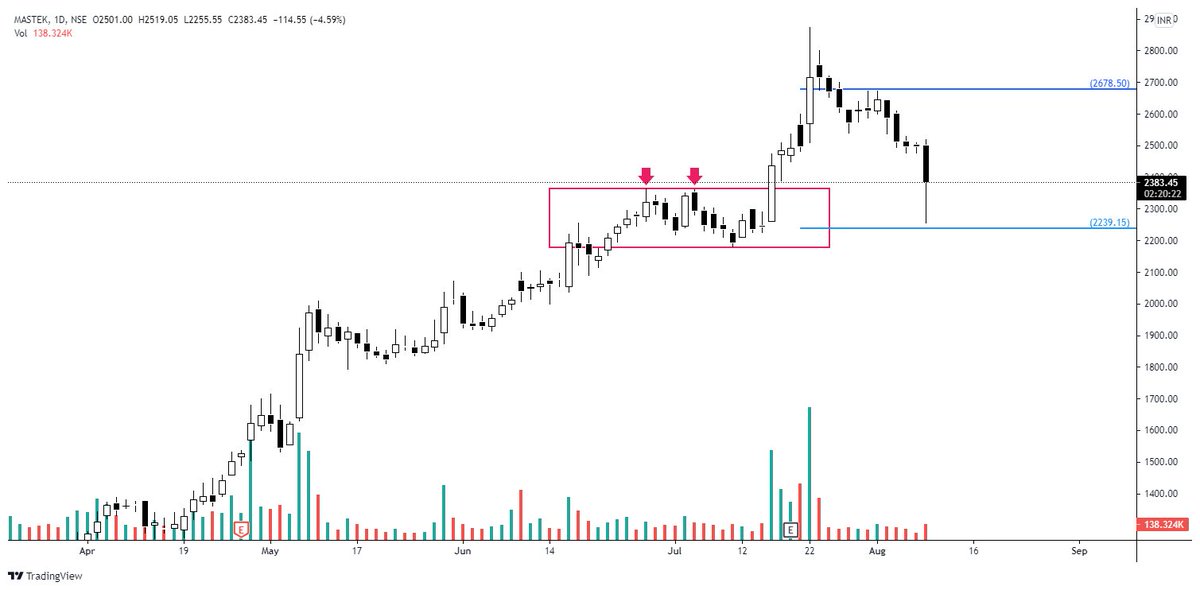
#MASTEK Update
— Gurleen (@GurleenKaur_19) July 23, 2021
2800 Hit; 70% Booked and rest Holding for a target of 2900.
#StockMarket #StockToWatch https://t.co/gQTyzf4IUS pic.twitter.com/fp9hrZyv7d
Post the Harmonic reversal, Amongst the Pharma sector; #DRREDDY is 10% down.
Strong sell-off, There's a high probability of 4874.80 getting breached. Immediate support at 4700.20
#StockMarket https://t.co/J61wgJdzX7
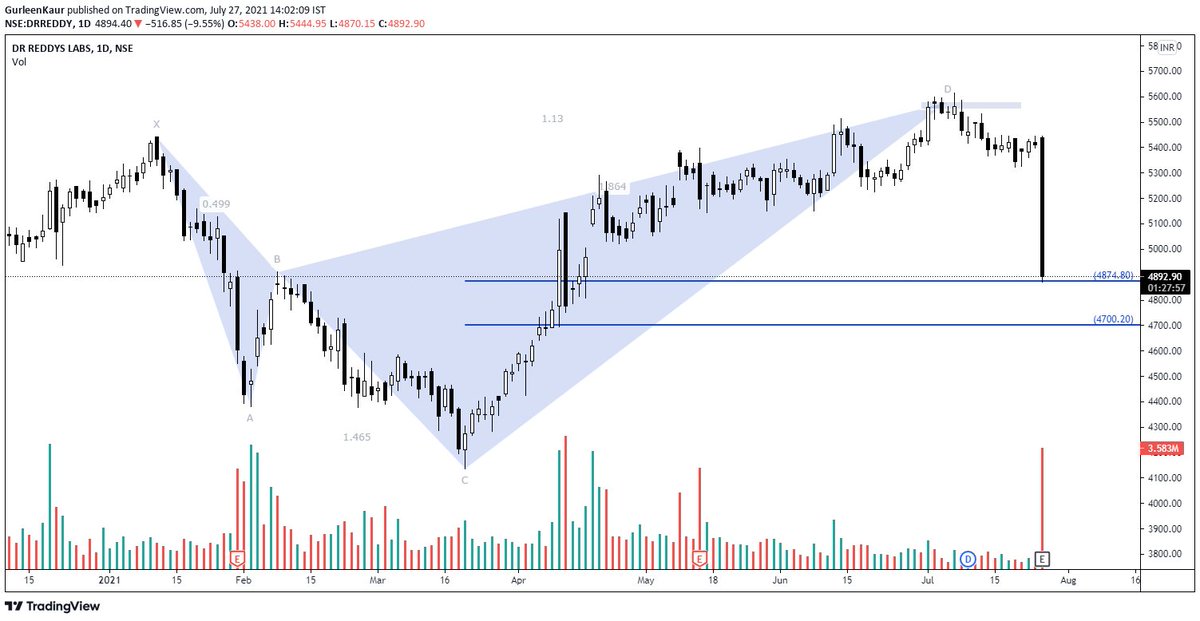
#CNXPHARMA
— Gurleen (@GurleenKaur_19) July 27, 2021
Strong Breakdown but it continues to hold above a crucial support level of 14183.65
Support staying intact or A slip below this level would lead the Index either side. #StockMarket pic.twitter.com/qgBZKB4Cyo
The price has now reached Point D and looks ready to take a dive from here.
Avoid fresh longs here. https://t.co/JpzNfzNRW1

#TVSMOTOR
— Gurleen (@GurleenKaur_19) June 26, 2022
The price advance might turn back from either the initial peak or Point D.
Let's see how it rolls out. pic.twitter.com/Lpf5ONGahd
More from Tatapower
Otw to 235 & 285 https://t.co/JgvNjKT3al
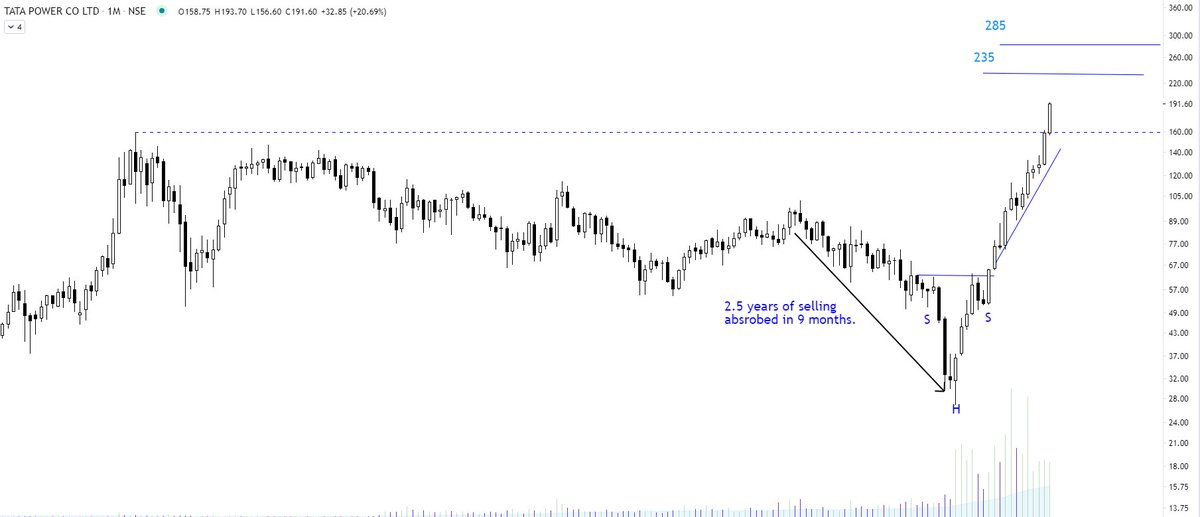
Tata Power - perfect for fresh long. Weak below 70. @nishkumar1977 @suru27 @rohanshah619 @indian_stockss @sanstocktrader @BissaGauravB @RajarshitaS @PAVLeader @Rishikesh_ADX @VijayThk @Investor_Mohit @TrendTrader85 pic.twitter.com/dfrFtr4yi9
— The_Chartist \U0001f4c8 (@nison_steve) December 18, 2020



